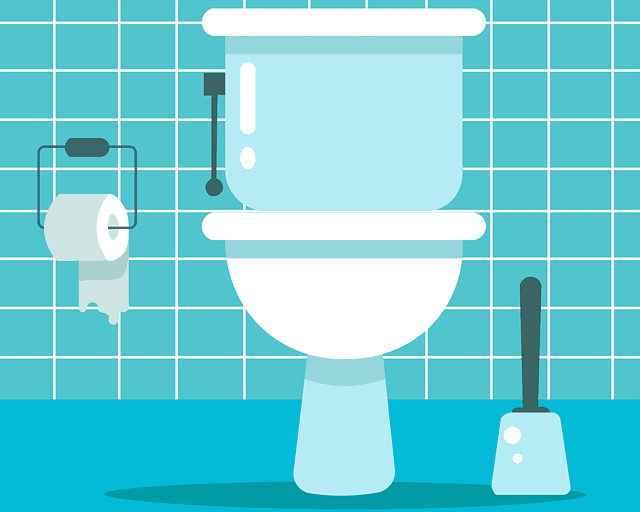A toilet functions with cold water and although today’s ceramic toilets are well-built and solid, they have their limitations. This is particularly true when it comes to extremely hot and boiling water.
Boiling water and other very hot liquids should never be poured down your toilet. Below we’ll discuss why this is the case.
How can a toilet crack from hot water?
A toilet bowl can crack from exposure to hot water if the water temperature is too high and the bowl is made of a material that is not heat-resistant. Ceramic toilets are generally more resistant to cracking from hot water than plastic toilets, but even ceramic toilets can crack if the water temperature is too high.
Things to avoid doing to prevent your toilet bowl from cracking:
Don’t pour boiling water in the toilet bowl: If you’re trying to dislodge a clog in your toilet, there are better ways to do so than pouring hot water in the bowl. Use a plunger. We’ll discuss below why a toilet crack isn’t the only thing that can happen if you pour boiling water in the toilet.
Don’t pour boiling leftovers in your toilet: If you’re trying to get rid of excess hot liquid from a dish you just made in your kitchen, don’t pour it down the toilet while it’s still hot. While dumping excess hot soup or broth or stock down the toilet seems like an easy fix, if it’s very hot, it may crack the bowl.
Another thing to consider: If you pour boiling liquid down your toilet and it suddenly clogs, the boiling water can sit in your waste water line and melt the seals. If you have PVC (polyvinyl chloride) pipes, this is a real possibility.
Even if your pipes are steel, don’t do it. Boiling liquids should never be poured into your toilet.
Can you toilet use hot water rather than cold water?
For what purpose? Using hot water in a toilet that is heated from your water heater would be a waste of money. Toilets work with cold water, full stop.
If your toilet is receiving hot water, there is some mistake with the water pipe hook up in your home. You should have a cold water line leading to all toilets, not a hot water one. If you have a new house and you’re experiencing this, it’s likely the case.
If your toilet used to have cold water and now suddenly has warm or hot water coming it, it could be a problem with a mixing valve, flapper or there could be a leak somewhere that is allowing hot or warm water in.
Get a licensed plumber to take a look because your toilet should only have a cold water connection leading to it.
Why else can a toilet bowl crack?
While we’re on the subject of cracked toilets, it’s worth noting that there are a number of reasons it can crack, not just from a hot liquid. Common causes include:
- Hard water buildup: Hard water contains a high level of minerals that can accumulate on the surface of the toilet bowl over time. If left untreated, the buildup can cause the bowl to become rough and eventually crack.
- Physical impact: Dropping a heavy object on the toilet bowl, or slamming the toilet seat down, can cause the bowl to crack.
- Age: Over time, even with proper care and maintenance, the porcelain material of the toilet bowl can weaken and crack.
- Manufacturing Defects: Sometimes the toilet bowl can crack due to manufacturing defects in the porcelain material.
It’s important to note that, if you suspect your toilet bowl has a crack for any reason, you should have it inspected and replaced as soon as possible by a licensed plumber. A crack in the bowl can allow water to seep into the flooring and subflooring, causing damage and increasing the risk of mold growth.
A toilet bowl is not worth repairing and should be completely replaced. A toilet tank on the other hand can usually be removed and replaced on its own unless the toilet is one piece.


